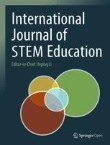- Social Sciences Citation Index (SSCI)
- SCOPUS
- CNKI
- EBSCO Discovery Service
- ERIC
- ERIH PLUS
- Google Scholar
- OCLC WorldCat Discovery Service
- ProQuest Advanced Technologies & Aerospace Database
- ProQuest Computer Science
- ProQuest Environmental Science
- ProQuest Engineering
- ProQuest Agricultural & Environmental Science Database
- ProQuest Biological Science Database
- ProQuest Central
- ProQuest Earth Atmospheric & Aquatic Science Database
- ProQuest Education Database
- ProQuest Materials Science & Engineering Database
- ProQuest Natural Science Collection
- ProQuest SciTech Premium Collection
- ProQuest Social Science Collection
- ProQuest Technology Collection
- ProQuest-ExLibris Summon
- ProQuest-ExLibris Primo
- UGC-CARE List (India)
- TD Net Discovery Service
- Science Citation Index Expanded (SciSearch)
- SCImago
- Norwegian Register for Scientific Journals and Series
- Navar
- Journal Citation Reports/Social Sciences Edition
- Journal Citation Reports/Science Edition
- Gale
- Dimensions
- DOAJ
- Current Contents / Social & Behavioral Sciences
- Chinese Academy of Sciences (CAS) - GoOA
Systemic advantage has a meaningful relationship with grade outcomes in students’ early STEM courses at six research universities
Large introductory lecture courses are frequently post-secondary students’ first formal interaction with science, technology, engineering, and mathematics (STEM) disciplines. Grade outcomes in these courses ar...

